Table of Contents
Context: In India, more urban women are entering paid employment, but the share of those doing unpaid household work has also increased.
Increase in Paid Employment
- Urban women in paid work: Increased from 5% in 2019 to 18% in 2024 (a rise of 2.5 percentage points).
- Urban men in paid work: Increased from 1% in 2019 to 61.2% in 2024.
- Paid work includes self-employment, salaried jobs, and casual labour.
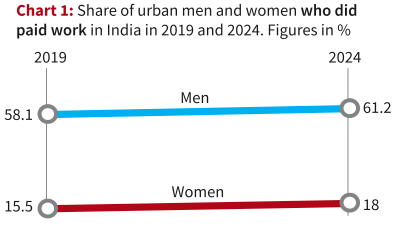
Rise in Unpaid Household Work
- Women doing unpaid domestic work: Increased from 3% in 2019 to 81% in 2024.
- Men doing unpaid domestic work: Increased from 23% in 2019 to 5% in 2024.
- Unpaid domestic work includes household accounting, purchasing goods, cooking, cleaning, waste disposal, and maintenance tasks.
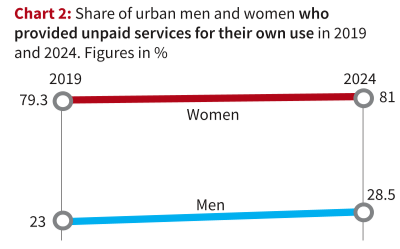
Care Work Responsibilities
- Women caring for children, elderly, and differently-abled: Increased from 9% in 2019 to 31.8% in 2024.
- Men in caregiving roles: Increased from 9% in 2019 to 17.3% in 2024.
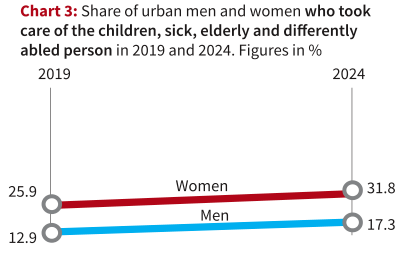
State-wise Gender Divide in Unpaid Work
- Across most States:
- Urban men in household chores: 20% to 40%.
- Urban women in household chores: 75% to 85%.
- North-eastern States show higher male participation in household work:
- Sikkim, Arunachal Pradesh, and Nagaland: Over 50% of men engage in household chores.
- Among major States, Kerala leads with 44% of men participating in domestic work.
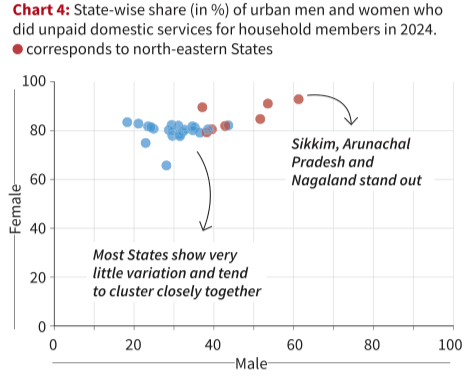
State-wise Gender Divide in Paid Work
- Across most States:
- Urban men in paid work: 55% to 65%.
- Urban women in paid work: 10% to 25%.
- Highest female workforce participation:
- Tamil Nadu: 25% of urban women engaged in paid work.
- Telangana: 24%.
- Karnataka: 22%.
- Himachal Pradesh: 23%.
- Lowest female workforce participation:
- Bihar: 9%.
- Uttar Pradesh: 10%.
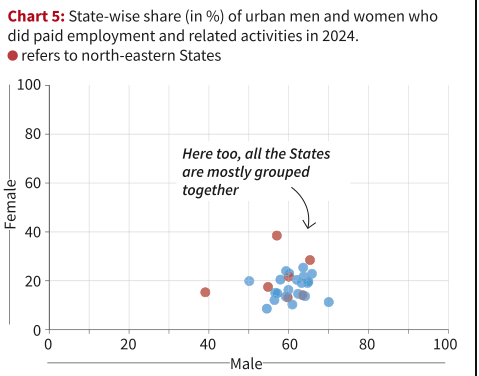
Conclusion
- Despite increasing participation in paid employment, most urban women continue to shoulder the majority of household responsibilities.
- The burden of balancing both professional and domestic work is particularly evident in Tamil Nadu, Telangana, Karnataka, and Himachal Pradesh, where over 80% of women handle household chores alongside employment.
- Gender disparity in unpaid domestic work remains stark, with male participation still significantly lagging behind.

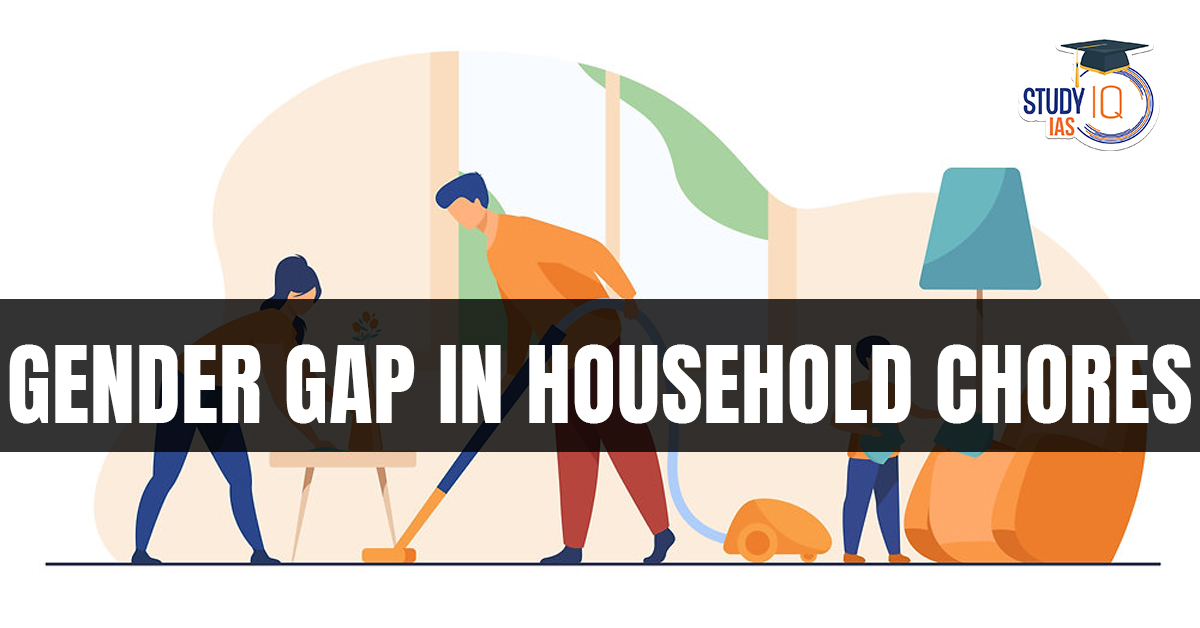
 Geo-tagging of Buildings During Upcoming...
Geo-tagging of Buildings During Upcoming...
 Gender Gap in Educational Expenditure in...
Gender Gap in Educational Expenditure in...
 Reservation and 50% Cap: Constitutional ...
Reservation and 50% Cap: Constitutional ...

























